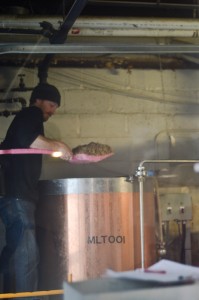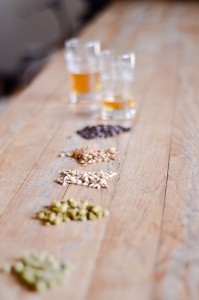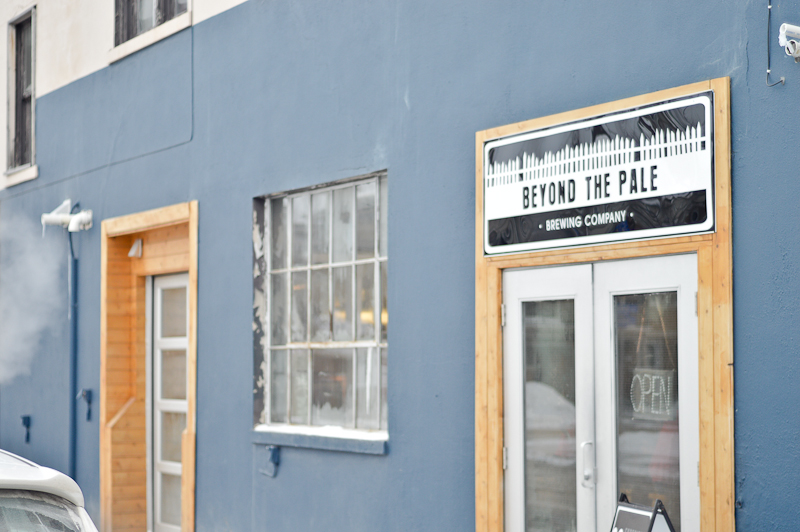When I first mentioned to Tristan Bragaglia-Murdock, one of the brewers at Beyond the Pale, that I wanted to write a piece teaching college students the basics of beer brewing, he laughed and said, “Oh lord, that could be dangerous.”
He was only semi-joking. Brewing beer is a little like water skiing, riding a unicycle, or learning to cook—easy in theory, but shockingly difficult to master and carries the risk of complete embarrassment upon failure.
At its simplest, beer is only four ingredients, but they are combined in limitless ways and with dozens of varieties, so no two beers ever taste the same.
But, on the plus side, all you need is water, malted grains, hops, and yeast in order to make the most basic—fairly bootleg—beer. It can theoretically be done with a few plastic tanks and a garage, and homebrewing in Ontario is perfectly legal.
Like many new Ontario breweries, Beyond the Pale began with a homebrewer and savvy business skills.
Holding the distinction as being the closest brewery to Carleton—a paltry three kilometres away—Beyond the Pale is build into an old storage-unit facility a block away from Tunney’s Pasture Station.
The brewery doesn’t yet retail with the LCBO and nearly all its output is sold through its front door, though plans are in the works to get the product beyond Hintonberg and to the thirsty masses.
For being such a difficult task to master, the basic steps go as follows:
 1) Obtain barley malt—the crop grows throughout Canada, so this isn’t a particularly difficult task. The barley is toasted at various lengths of time, making it sweeter.
1) Obtain barley malt—the crop grows throughout Canada, so this isn’t a particularly difficult task. The barley is toasted at various lengths of time, making it sweeter.
“I like to make the analogy of toast—you toss it in as white bread, and the more you toast, the more there’s caramelization, until you burn it, and then it’s almost like roasted coffee,” Bragaglia-Murdock says.
Darker beers tend to use a mixture of slightly-roasted malts and dark brown, toasted malts, while light beers generally just stick with lighter malt. Beyond the Pale uses close to 24 different types of malts in their beers.
2) The carefully toasted malt is then mashed to a pulp, producing grist. The grain can be mashed using anything from an old-timey watermill to a team of bros with rocks and hard surfaces.
3) The malt is placed in hot water and steeped, like French press coffee. This produces a sort of sugar water called wort. It’s actually quite refreshing, and I’m sort of amazed it hasn’t became a yuppie health craze. The leftover spent grains, the “coffee grinds” if you will, are then removed from the bottom of the tank. Beyond the Pale uses a pretty pink plastic shovel.
4) At some point during this steeping, the first round of hops are added. Hops are a sticky flower that grows on the hop vine, but most hops are purchased as crushed pellets.
“They’re used as a preservative, bittering agent, and just to provide flavour,” Bragaglia-Murdock says. “Hops added early provide more bitterness.”
 5) Next, the wort is brought to a boil and more hops are added.
5) Next, the wort is brought to a boil and more hops are added.
“Hops added later are called aroma hops, because they don’t break down as much and you get more aroma and flavour,” Bragaglia-Murdock says.
Not all hops are the same, and like other crops grown for consumption, there are all sorts of strains of hops which produce completely different flavours. Beyond the Pale uses about 20 kinds of hops.
6) The wort is spun in a whirlpool to remove spent hops and solids still floating in the mixture.
7) It should be noted that at this point, the barley-hop-water mixture is totally non-alcoholic and sugary. Yeast is required to ferment the sugars in the mixture into alcohol, producing what we know of as beer. However, yeast dies when placed in boiling water, so the wort needs to be cooled to the temperature best suited to the sort of yeast being used.
This gets quite tricky. There are hundreds if not thousands of yeasts that can be used, and they all provide different characteristics for the finished products. Typically, lager yeasts require a cooler temperature to thrive and do their fermenting at the bottom of the tank, while ale yeasts require a warmer temperature and ferment at the top of the tank.
Fiddling with this concept can create different results—certain ale yeasts placed at cooler temperatures will create cream ales, while certain lager yeasts at warmer temperatures will create California Common (think Anchor Steam Ale). Beyond the Pale uses about four kinds of yeasts in their product line.
8) After the wort is cooled, the yeast is added, and most of the sugar is fermented, the yeast begins to settle to the bottom of the tank. Heineken has been using the same strand of yeast with various generations living in their tanks for 200 years. The beer is cooled to near freezing then transferred to a conditioning tank to be clarified, have the flavours settle, and sometimes carbonated.
9) At this point, the beer can be filtered, though that’s becoming remarkably less common in today’s craft brewing world.
If all goes according to plan, you should now have something that resembles beer. Besides these four ingredients, dozens of other products can be added during the process to create various styles.
Beyond the Pale uses ingredients such as grapefruit rinds and wheat mash to create a its flagship brew Pink Fuzz, a citrusy wheat beer. It’s important to remember there are so many variables in each batch of beer that without a whole lot of careful measuring, it could be difficult to make the same beer twice.
“You can change one or two things, or change the quantities, and you won’t make the same beer,” Bragaglia-Murdock says. “There’s a lot of playing around, and a lot of playing about with the ingredients.”





![Here’s how your favorite media platforms shape your world view without you realizing it Advertising revenue and subscriptions are the main source of income for news outlets. [Graphic by Sara Mizannojehdehi]](https://charlatan.ca/wp-content/uploads/2021/07/11BE7ADB-1CC8-46E8-ADB4-568B3C7F1265-218x150.jpeg)
